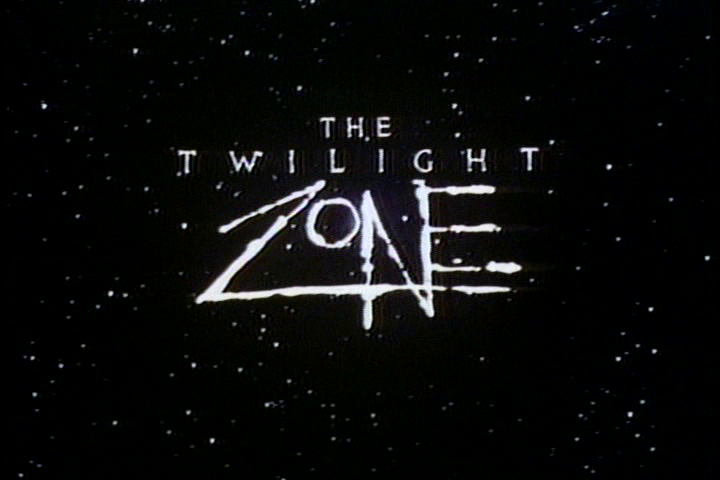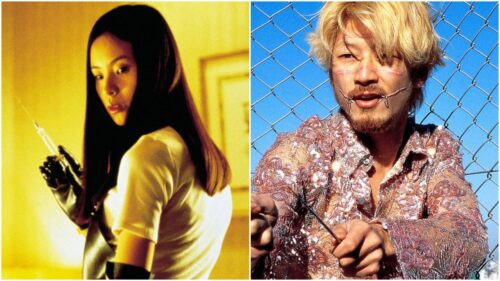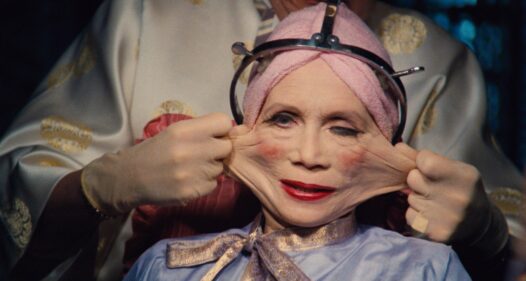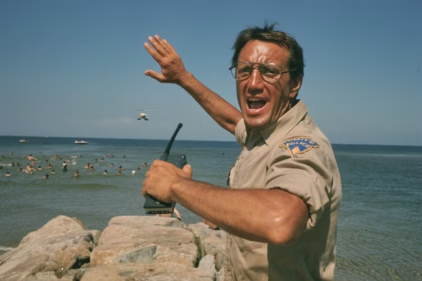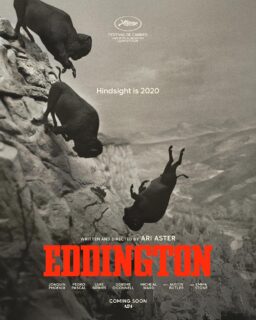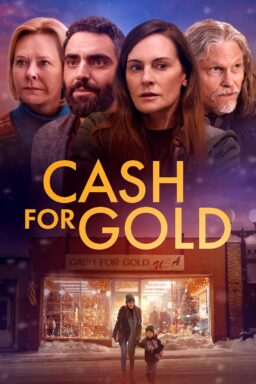Superstition

There is a fifth dimension beyond that which is known to man. It is a dimension as vast as space and as timeless as infinity.
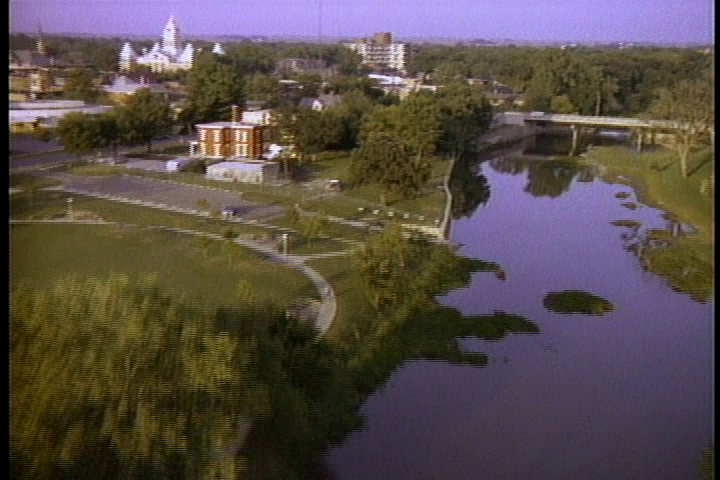
It is the middle ground between light and shadow, between science and superstition, and it lies between the pit of man’s fears and the summit of his knowledge.

This is the dimension of imagination. It is an area which we call the Twilight Zone.
–Original opening narration to “The Twilight Zone”

Ellison: I just saw “Back to the Future.”
Goldberg: Great movie, isn’t it?
Ellison: Piece of shit.
Goldberg: You didn’t like it?

Ellison: It is one of the most ridiculous, stupid pieces of shit I have ever seen in my life. It’s a rip-off, a steal from Bob Heinlen’s Time Enough for Love, to begin with. It is absolutely mindless, empty-headed, manipulative, and it’s a sitcom. — From Lee Goldberg’s “Harlan Ellison: Next Stop: ‘The Twilight Zone,’ ” Starlog 100, November 1985

Twelve-year old Brian, reading wide-eyed: Who is this?

Science
On Sept. 27, 1985, a new version of “The Twilight Zone” debuted on CBS. The Rod Serling original had left the air in 1964, but the continuing impact of series remained undeniable. This revamped “Zone,” from show-runners Phil DeGuere, James Crocker, and executive story consultant Alan Brennert, was one of three attempts by networks that season to revive the anthology form (the other two were Steven Spielberg’s “Amazing Stories” and a revived “Alfred Hitchcock Presents,” which spliced colorized footage of Hitch from old episodes to the front of re-made and brand-new stories).

A lot was riding on “The Twilight Zone,” which was CBS’ attempt to replace “The Dukes of Hazzard” with something more complex and adult. And the first image we see (following the Grateful-Dead-scored opening credits) is Bruce Willis at a bar, trying to call his girlfriend, and accidentally calling himself. Just before he hangs up, he hears his own voice on the other end, saying, “Hello?”
“Shatterday,” Brennert’s adaptation of Harlan Ellison’s short story about split personality, ethics, and animus, would be one of two Ellison adaptations the new “Twilight Zone” would air (alongside the Ellison original “Paladin of the Lost Hour,” and his adaptation of Stephen King’s “Gramma”), and Ellison also briefly worked on the show as a Creative Consultant and self-described “ombudsman,” vetting scripts and working with writers.


The other Ellison adaptation, “One Life, Furnished in Early Poverty” (also done by Brennert) would air in early December, after Ellison contentiously left the show following censorship fights with the network over his adaptation of Donald Westlake’s “Nackles.”

“Shatterday” and “One Life…” are both tales of identity, memory, and opportunity either lost or only imagined as possible. Both feature major stars of the period (Bruce Willis, Peter Riegert), and both take Serling’s original mission of using fantasy to explore the human condition to its next logical stage: eliminating the sentimental, Aesop-like endings Serling often favored and replacing them with something more open-ended and tonally ambivalent.

Ellison had been part of the “New Wave” of science fiction in the late 60s, and these episodes—and the new “Zone” as a whole—offer fascinating examples of creative people trying to merge older and newer genre threads within the mode of mid-’80s commercial television.

That mode made a new “Twilight Zone” corporately appealing. CBS had bought out Serling’s interest in the show after it was cancelled, and had made a great deal of money when the program proved even more popular in syndication. As an in-house production, the network would own the rights to a new version the show, and not have to share in any potential profits with an outside studio.
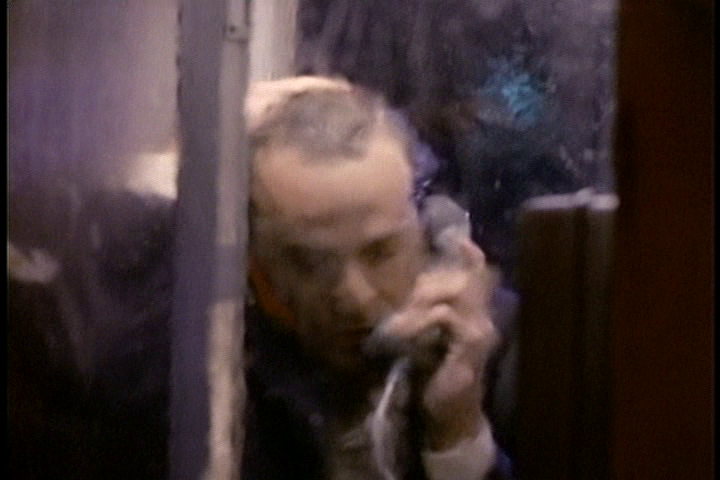
Despite the relative failure of the 1983 film adaptation, the network—led by VP of Drama Development Carla Singer—approached producer Phil DeGuere, who was making Simon & Simon for the network, about rebooting the series. DeGuere brought on producing partner James Crocker, and recruited freelance writer Alan Brennert, who’d long wanted to adapt Ellison’s work. Along with story editor Rockne S. O’Bannon, Ellison formed the final part of what he called “five men working as a gestalt mentality.”
There were those who resisted their experiments.

In “Dimensions Behind The Twilight Zone,” writer and “Twilight Zone Archives” creator Stewart T. Stanyard felt that “If you hadn’t seen the intro sequence telling you it was a new version of “The Twilight Zone,” you wouldn’t know what you were watching. If the series had aimed at actually continuing where the original had left off, it probably would have been more successful.”

In the second edition of his essential The Twilight Zone Companion, Marc Scott Zicree was mostly sympathetic to the challenges the new team faced, but felt, “In the new ‘Twilight Zone,’ characters frequently tended to be generalized, simplified, familiar TV cutouts giving voice to exposition without subtext.” Ratings for the show were initially strong—it won its 8 p.m. timeslot for four of its first five weeks—but then began to slip, and coupled with the costs of generating new sets, costumes, and casts each week, led to greater network interference and eventual cancellation.
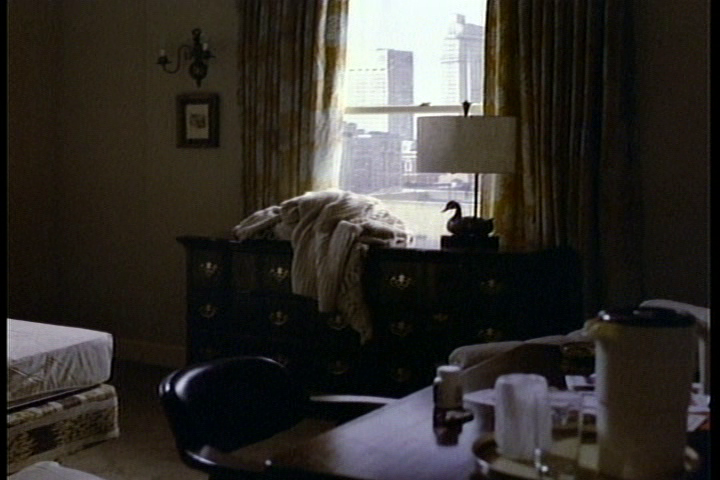
Alan Brennert noted the irony: “They grew up watching ‘Twilight Zone,’ too,” he said, and it was thus harder to slip controversial material past them via fantastic metaphor. “They want safe shows … and by its very nature, ‘Twilight Zone’ cannot be a safe show.”

Ellison, in his typically understated fashion, would later write of his network experiences, “I forgot that for every DeGuere or Crocker who cares about what comes to you through that little box, there are a hundred clowns in suits, terrified of making waves, who puff up like a banjo player who had a big breakfast with the import of the job.”
Shadow

As an eager young Starlog subscriber, that interview with Ellison quoted above threw me for a loop. I liked “Back to the Future” (I still like it, actually). And while even at 12, I knew he was right about “The Goonies” (“It’s a moron movie. It’s noisy and you can’t understand anything that’s said on the soundtrack”), I was still stunned by his Wolverine-like ability to offhandedly eviscerate a lot of contemporary science fiction, and to do so in a fan bible that often valorized and promoted the pop culture he was slamming. How dare he?

In what I would come to learn was a rite of passage for many Ellisonians, what caught my attention was his ability to piss me off. He infuriated me, but I kept reading, intrigued by this funny, opinionated guy—so many references and profanities flew out of his mouth that it’s a wonder interviewer Lee Goldberg kept up.

The next time I was at our local bookstore, just a week or two before the new “Twilight Zone” debuted, I searched for his name on the shelves, and found a paperback of his collection “Shatterday” (I still have it, its white cover sporting a brilliant painting of Ellison in a slick suit, looking shocked as the phone receiver in his hand turns into a deadly serpent).


A picture of the bedroom of nerdy young Brian at 12 would reveal a space strewn with Marvel Comics and fantasy magazines, with images from films, with the general look of someone who wanted to escape: from his increasingly acne-strewn body, from the cursed social rituals of middle school (whose alienations made me feel like I’d stepped into “Invasion of the Body Snatchers”: all the pod people looked the same, but acted so differently), from the fraught emotional confusion inside his head.


The intensity of Peter Riegert’s Gus in the opening scenes of “One Life, Furnished in Early Poverty,” as he yells in anger, then obsessively tries to fix the miniature toy soldier he’s broken in a rage (even as his date from the night before tries futilely to carry on a conversation with him), really resonates with who I was then, with who I still sometimes am now: easily annoyed, hyper-focused and obsessive about pop detritus, projecting on to it the need to get it just right, in order to fill or maintain some gap.

Gus walks out of the room, and returns to his small Ohio hometown, where in his family’s old backyard, he had buried the same kind of toy soldier four decades earlier.

The act of digging creates a supernatural wind that carries Gus back to his childhood in 1941, where he encounters his seven-year old self, an increasingly angry and picked-upon boy who escapes into comics, movies, radio adventure shows. Just like I did in 1985.

It’s probably notable that so much of my memory of that year is marked by the covers of the comics I was reading, the images from TV shows I was devouring, the pop music that was piped into the classes of our otherwise bullying art teacher. “I had played here,” Gus’ first person narration in Ellison’s original story noted of his childhood backyard, “and built a world for myself here, from dreams and loneliness.”

There’s a great story Ellison tells in his DVD audio commentary for the episode, about coming onto the set and watching Chris Hebert (as young Gus) watch Riegert (as older Gus) speak to his/their father (who was based on Ellison’s own Dad). There was, Ellison noted, a kind of emotional intensity and transformation to that moment of three versions of “himself” occupying the same space.

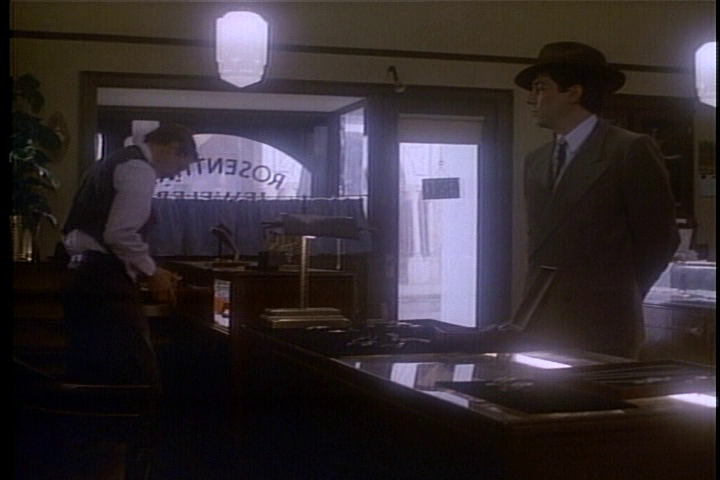

As I watch the episode now, I am me in 2017, looking with a critic’s eye and making various textual connections; me in 2009, re-watching the episode on DVD in northeast Ohio, where I’m teaching cinema in a small town just down the road from where Ellison grew up in Painesville; and me in 1985, huddled around the TV on Friday nights, escaping from the pain of the middle school week, longing myself into something that seems both wondrous and very adult. As Ellison writes at the end of his version of “One Life…,” “… what if I come back again … and again?”

Light

Novins considered the problem, then said, “Why don’t we compare likes and dislikes. That’s a start. That sound okay to you?”
—from “Shatterday” (short story)

I like, I don’t like: this is of no importance to anyone; this, apparently, has no meaning. And yet all this means: my body is not the same as yours.
—Roland Barthes
From the “Shatterday” and “One Life, Furnished in Early Poverty” adaptations,
I like:

—Bruce Willis’ performance, keenly balanced between Peter Novins outside his apartment—dazed, enraged, always keyed to “11”—and “Jay” Novins, his other half inside the apartment, calm and chillingly smug;

—The pissed expressions on the two women Peter cuts off to get into a phone booth, and way “Shatterday” director Wes Craven almost melts the rain hitting the booth over Willis’ face in one shot;

—The smoke and neon in the bar in “Shatterday”’s opening scene;

—How Peter Riegert stands upright in his ‘40s suit after the mystical wind in “One Life…” carries him back, in contrast to his hunched, enraged posture in the ‘80s sections;


—The way Chris Hebert’s young Gus bends over his comic book at the drugstore, like he’s trying to slip into its panels;

—The way the episode brings Gus’ father into the story, in a way the original text didn’t.


—The interplay between the two commentaries (one by Ellison, the other by DeGuere, Brennert and Craven) for “Shatterday”—how well their split nature works in tandem with the episode they’re talking about.
I dislike:

—The ‘80s optical effects used to fade out Peter Novins in his final scene in “Shatterday”;

—The “chapter breaks” in “Shatterday,” which work better on-page than screen;

—The way the traditional “Twilight Zone” undercuts the tension and sadness of both episodes, offering a false closure to what we’ve just seen.
Dimensions of Imagination
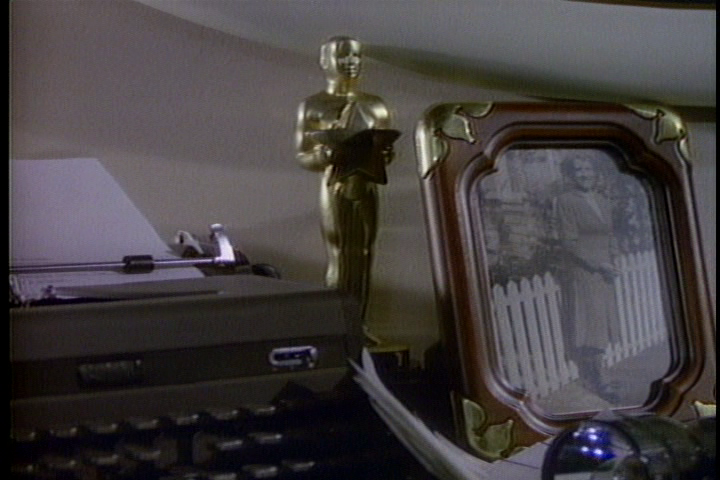
“I had played here, and built a world for myself here, from dreams and loneliness. But now it was their backyard.”

That’s the kicker to the end of the passage from the “One Life…” short story I cited above, and it’s easy to lose track of it amidst the fantastic events elucidated by Ellison’s evocative prose. Certainly, adult Gus lets the thought pass amidst everything that’s happening—much to his detriment. And it’s only when a rash overtakes his body, and the dizziness starts, that he realizes what his actions, however well-intended, have wrought: “I was alien in my own past.”
In adapting Ellison to the screen and hiring him for the show, the “Twilight Zone”’s producers made a valiant effort not to get trapped in their program’s own legacy, to not be like the many characters on Serling’s original who found themselves back in their own childhoods, but with the terrible knowledge of what came next.


In translating Ellison’s prose to visuals, Brennert and the shows’ directors (Craven and “One Life…” director Don Carlos Dunaway) make smart choices that either compress the story (showing only a handful of the days of the week that Ellison’s “Shatterday” explored in full) or expand it emotionally (making the first instance of violence in the “One Life…” show come from Gus’s father spanking him, rather than kids tackling Gus at the playground, as in the original story).

Particularly in “One Life…,” the brilliant descriptive power of Ellison’s prose—especially around the artifacts of his childhood—is well-carried by Dunaway’s attention to visual detail: we can almost smell the chocolate on the sundaes at the drugstore, just as we can feel the sweat on Bruce Willis’ face in “Shatterday” via Wes Craven’s close-ups.


Each episode feels properly allusive, linking out visually to other texts, be they the dream-spaces of Craven’s horror films, or the way Gus watching his own past—and being trapped by that gesture—evokes “Our Town.” And for the most part, neither adaptation shies away from the underlying politics in each story (although the explicit acknowledgement of anti-Semitism in the “One Life…” short story is compressed here to a brief, weighted moment when Gus’s father says, “I thought we were the only Rosenthals in town”).

Both stories are extremely personal to Ellison. “Shatterday” began as an imaginative extrapolation of Ellison once doing just what Peter Novins does—checking on a date, but misdialing his own number—and developed (as he notes in his introduction to his “Shatterday” collection) into a meditation on the ethical obligations he felt to his own mother.

On the commentary to the “One Life…” episode, Ellison says the original story is the most autobiographical thing he’s ever written; indeed, almost as moving as the episode itself is Ellison’s commentary, in which he frequently has to pause to recover his voice, as he gets caught up in reminiscences about his parents, and all the things he never got to say them.

Perhaps that personal quality means that, while both “Twilight Zone” episodes are very good, they feel lacking when compared to the original stories. The original “One Life…” ends with a striking “montage” of perspectival changes between Gus and Young Gus, Ellison expertly using the ambiguity of pronoun referents—who is the “I” that is speaking?—to confuse the reader, and plunge him or her into both Guses’ emotional turmoils.



The original “Shatterday” also plays with ambiguity of reference, having fun with doubled names in order to both blur and further divide the two Peters from one another; but where “One Life…” hurtles the reader toward a devastating conclusion about Gus’s future, “Shatterday”’s tone is clinical and darkly humorous—there are serious and sincere points Ellison is making throughout the story, but the third person narration gives him distance from each of his protagonists, allowing for a more ironic perspective on their good and bad qualities.


That gets lost in the TV version of “Shatterday,” not so much despite the skill of Bruce Willis, but because of it—he invests so fully in each part of Peter that we can’t help but have empathy, when maybe a little distance is called for. Similarly, Riegert’s open face in “One Life…” lends Gus a sympathy that being the story’s first person perspective doesn’t always grant. The adult Gus of the short story is certainly empathetic, but so brutally honest about his own failings that the effect is quite different than observing the alternating joy and sadness of Riegert’s hang-dog expressions. Perhaps that’s why the TV version gives him a happier ending the short story did, a bit more closure.

Originally airing December 6, 1985, it feels like an ambivalent Christmas fable, whereas Ellison’s original short story carries the weight of recriminations, the paradoxes of nostalgia.
Returning to the work and that Starlog interview 31 years later, makes me feel a bit like both adult Gus and Peter Novins’ better half: I can see the jarring, ecstatic encounters that would transform me, as well as the “shadow of the self” I’ve edged away from.

It’s not my truth about writing, as it is Ellison’s in that interview, that one should “have it right in your head before you sit down, that’s what art is all about” (boy, did that one scar me for years). What I’d read as Ellison’s absolute moral certainty grew less appealing to me as I got older: Were our choices always that stark, their ethical dimensions always so absolute? I told myself that in moving away from Ellison, I was actually paying tribute to what I felt he’d taught me—the need to stay true to yourself, to say “no,” even to one of the writers who’d taught you that very thing. Now it was my backyard (even if I still say to myself, “Why is he telling me this?,” a phrase learned from many Ellison introductions).

But re-reading/re-watching also lends his work a greater amount of grace than I would’ve seen as a confused tween, or a more self-assured young adult. It’s easier now to feel the sadness and longing, the irony and the weight of the years. What seemed absolute in his work now feels appealingly tentative, exploratory. It’s kind of a personal joke that everything seems to remind me of Stephen Sondheim’s “Follies,” but “One Life…,” originally published in 1970 (just one year before Sondheim’s show opened) really does remind me of “Follies,” in its grappling with ghosts and alternate selves, with time travel and the use of the fantastic as both a balm for the present and a warning about living in the past.

These are stories that get older with us, that we can carry into the future in a way that neither Gus nor Peter Novins could (or should) have carried their imagined, misremembered selves.



Ellison writes, he reminds us in his introduction to “Shatterday,” to tell us “you are not alone,” and of course he’s right: we have that “middle ground,” as the original “Twilight Zone” introduction put it, “between light and shadow”; this is “the dimension of imagination,” and it can be the generator, the adaptation of our own best, ongoing versions of ourselves.

